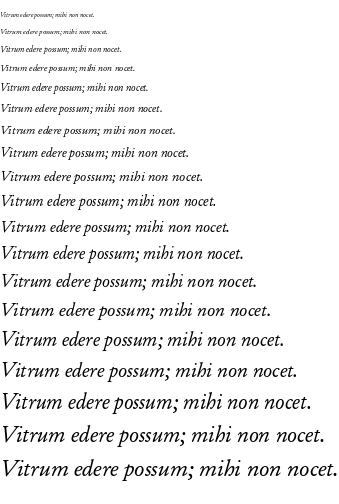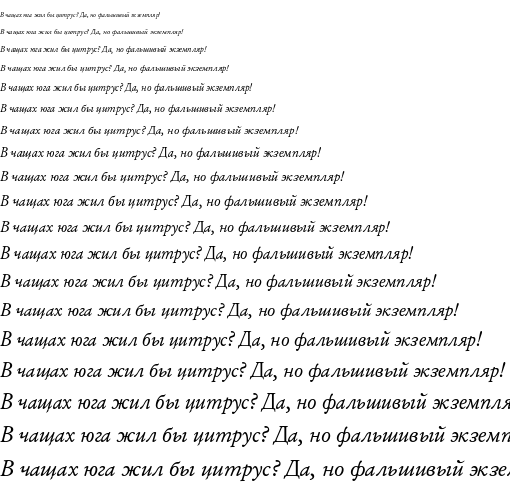| Description: | Greek typefaces:
- Aroania, based on the ?New Hellenic? font by Victor Julius Scholderer
(1880-1971).
- Anaktoria, grecs du roi was designed by Claude Garamond (1480 ? 1561)
between 1541 and 1544, commissioned by king Francis I of France, for the
exclusive use by the Imprimerie Nationale in Paris. Greek in Akaktoria is
based on a modern version of Grecs du roi prepared by Mindaugas Strockis in
2001. Lowercase Latin stems from the titles in the 1623 First Folio Edition
of Shakespeare. Scott Mann & Peter Guither prepared a modern version for The
Illinois Shakespeare Festival in 1995. Cyrillic has been designed to match
the above Greek and Latin. The font covers the Windows Glyph List, Greek
Extended, various typographic extras and some Open Type features
(Numerators, Denominators, Fractions, Old Style Figures, Historical Forms,
Stylistic Alternates, Ligatures, Swash Capitals).
- Alexander, a text typeface using the Greek letters designed by Alexander
Wilson (1714-1786), a Scottish doctor, astronomer, and typefounder. The type
was especially designed for an edition of Homer?s epics, published in 1756-8
by Andrew and Robert Foulis, printers to the University of Glasgow. A modern
revival, Wilson Greek, has been designed by Matthew Carter in 1995. Peter S.
Baker is also using Wilson?s Greek type in his Junicode font for medieval
scholars (2007). Latin and Cyrillic are based on a Garamond typeface. The
font covers the Windows Glyph List, Greek Extended, IPA Extensions, Ancient
Greek Numbers, Byzantine and Ancient Greek Musical Notation, various
typographic extras and several Open Type features (Case-Sensitive Forms,
Small Capitals, Subscript, Superscript, Numerators, Denominators, Fractions,
Old Style Figures, Historical Forms, Stylistic Alternates, Ligatures).
- Avdira, based on the lowercase Greek letters in the typeface used
by Demetrios Damilas for the edition of Isocrates, published in Milan in
1493. A digital revival, was prepared by Ralph P. Hancock, in his Milan
(Mediolanum) font. Italic Greek were designed in 1802 by Richard Porson
(1757 ? 1808) and cut by Richard Austin. They were first used by Cambridge
University Press in 1810. Capitals, Latin and Cyrillic, as well as the
complete bold weights, have been designed in an attempt to create a
well-balanced font. The font covers the Windows Glyph List, Greek Extended,
various typographic extras and is available in regular, italic, bold and
bold italic. The regular style of the font also covers IPA Extensions,
Ancient Greek Numbers, Byzantine and Ancient Greek Musical Notation and
several Open Type features (Case-Sensitive Forms, Small Capitals, Subscript,
Superscript, Numerators, Denominators, Fractions, Old Style Figures,
Historical Forms, Stylistic Alternates, Ligatures).
- Asea, typeface with four styles covering almost the whole Greek script as
defined by unicode, by Firmin Didot (1764-1836). |



